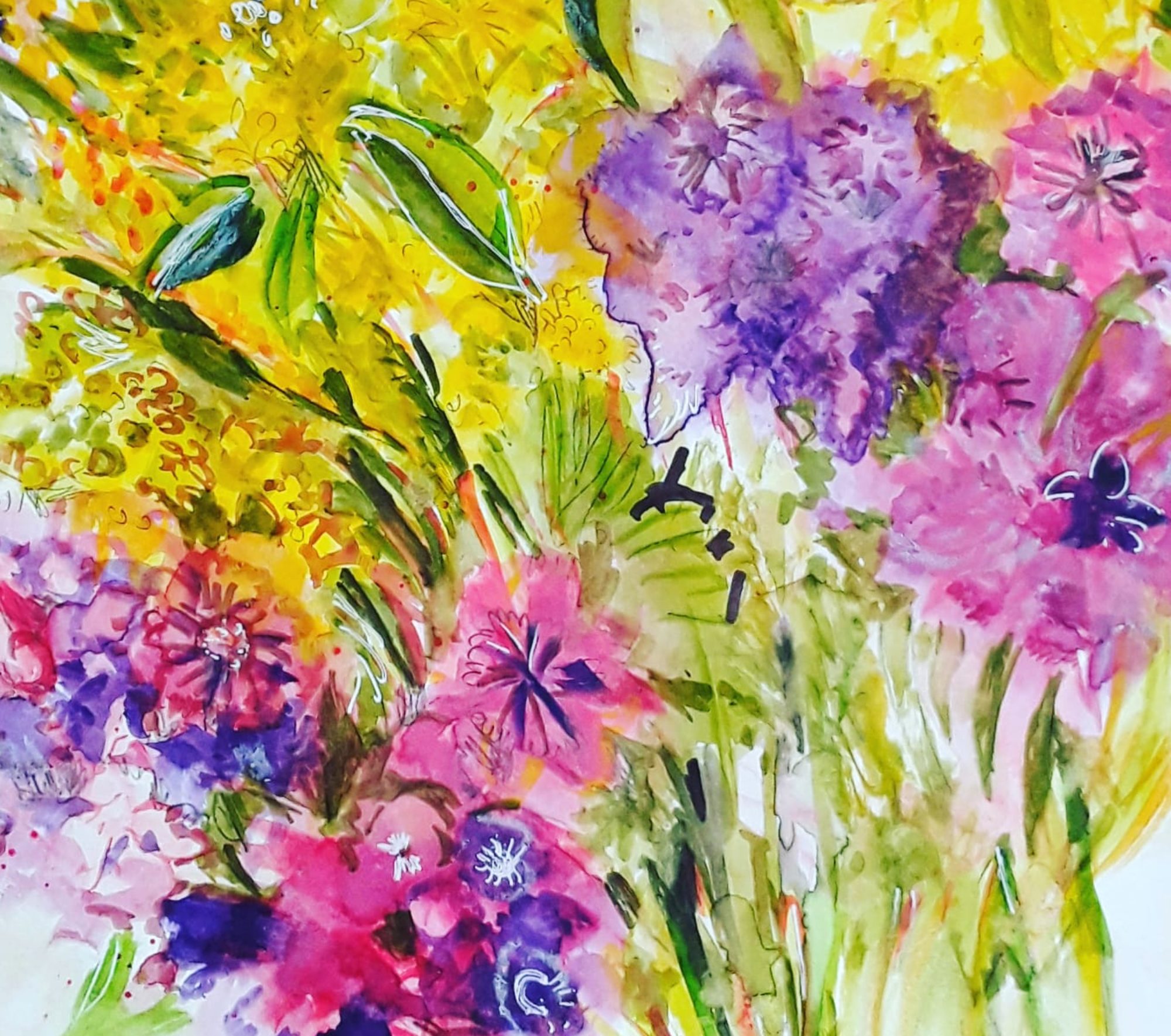
Good morning everyone. Well, I thought I would show you this story picture all about new beginnings. Actually, the reason why I held back was that I never really felt that I had finished it. Just to wind back a bit, I went into this project quite blindly. To be honest, for the first time ever, I painted this narrative painting quite intuitively. And all I knew was that I wanted to do something with the idea of making a new start. Probably I started thinking about this after hearing stuff on the radio about the recovery from the pandemic . Apparently, this might be an ideal time to rethink the way we run our world.
How to Create a Story Picture on New Beginnings (Badly !)
Firstly, I sketched in a lonely figure and then I imagined surroundings that don’t quite look familiar. Next, I added a moody sky to set a slightly threatening atmosphere.Then I painted various elements like luxuriant plants, a stony path and a mysterious castle. Finally, I changed everything around, including the type of foliage, the sky and the colour scheme! In fact, I wouldn’t recommend this process at all!

Unfortunately, I didn’t manage to get photos of all the different attempts I made to improve the composition. And I painted them all in acrylic paint on the same tired old piece of paper! Well, at least I taught myself to understand the importance of planning a complex composition in advance. Even if I chose the hard way to learn!
What’s the Story?

Anyway, I eventually chose this version, I don’t think I could give the paper any more punishment! But, all the time I was painting I was thinking of fresh starts and a chance to break out of the old rut. And, I wonder if other people are having the same thoughts as me right now. So, what do you think this woman’s story is?
Incidentally, I have some other interesting story pictures in my Gallery here. For example, you might like to see the enigmatic Silk Princess here or the Green Knight in his rocky church here .























































































